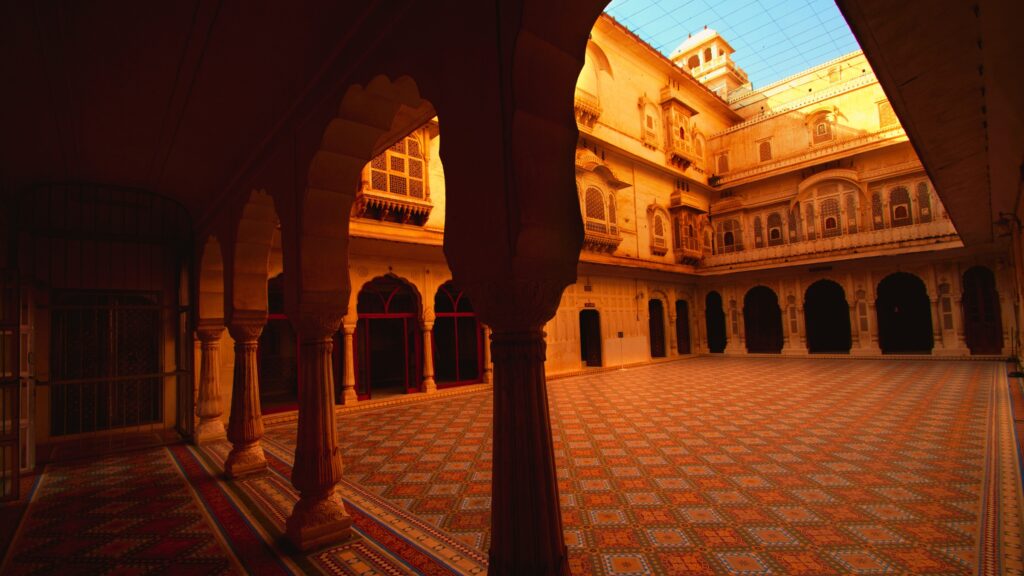
Junagarh Fort, located in Bikaner, Rajasthan, is a monumental symbol of Rajputana grandeur and resilience. Built in 1594 by Raja Rai Singh, the sixth ruler of Bikaner, this fort is one of the few in Rajasthan that was not constructed on a hilltop. Instead, it stands proudly on the plains, showcasing its robust design and intricate craftsmanship.
Raja Rai Singh, a trusted general in the Mughal Emperor Akbar’s court, used his architectural vision and resources to commission this magnificent structure. Originally known as “Chintamani,” it was renamed “Junagarh,” meaning “Old Fort,” in the early 20th century when the royal family shifted to Lallgarh Palace.
Junagarh Fort’s architecture is a blend of Rajput, Mughal, and Gujarati styles, reflecting the artistic influences of the era. The fort comprises several palaces, temples, and pavilions, each narrating tales of a glorious past. Some notable structures within the fort include the Anup Mahal, Ganga Mahal, Karan Mahal, and Phool Mahal. These palaces are adorned with exquisite carvings, vibrant frescoes, and fine latticework.
The fort also houses the “Karan Prol” (main entrance), which features intricate stone carvings and serves as a gateway to its splendor. Inside, the museum showcases rare artifacts, including manuscripts, weapons, and royal portraits, offering visitors a glimpse into Bikaner’s rich history.
Despite facing numerous sieges, the fort remained unconquered, a testament to its formidable defenses. Its history intertwines with tales of valor, cultural evolution, and architectural innovation, making Junagarh Fort an enduring symbol of Bikaner’s heritage. Today, it stands as a UNESCO World Heritage Site nominee, attracting tourists and history enthusiasts from around the world.

